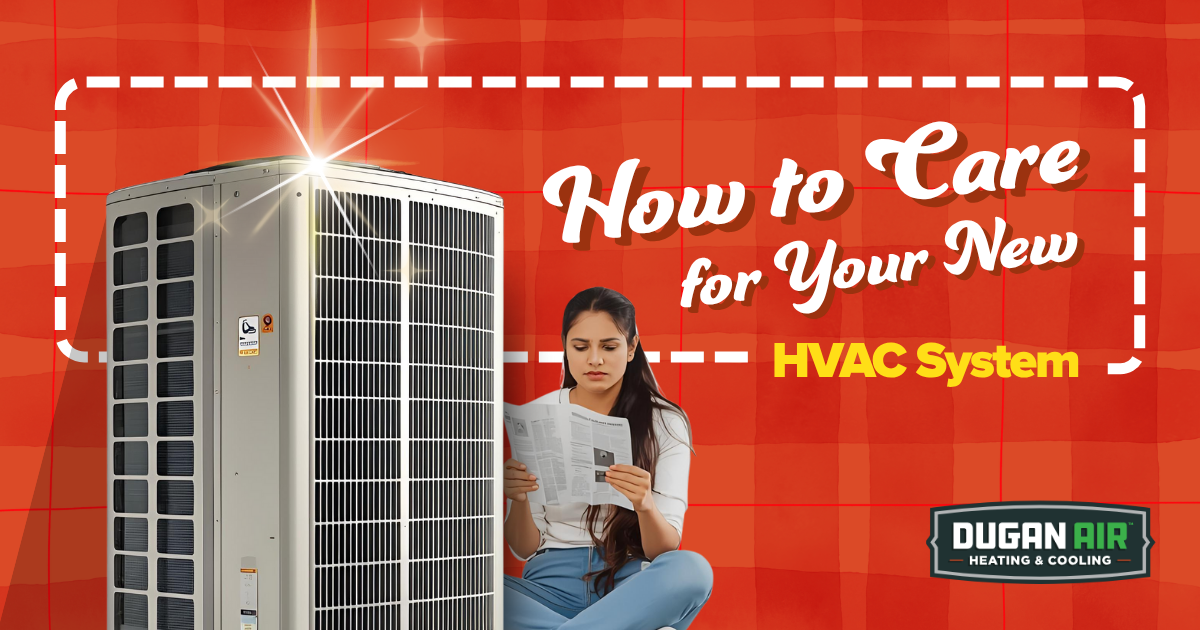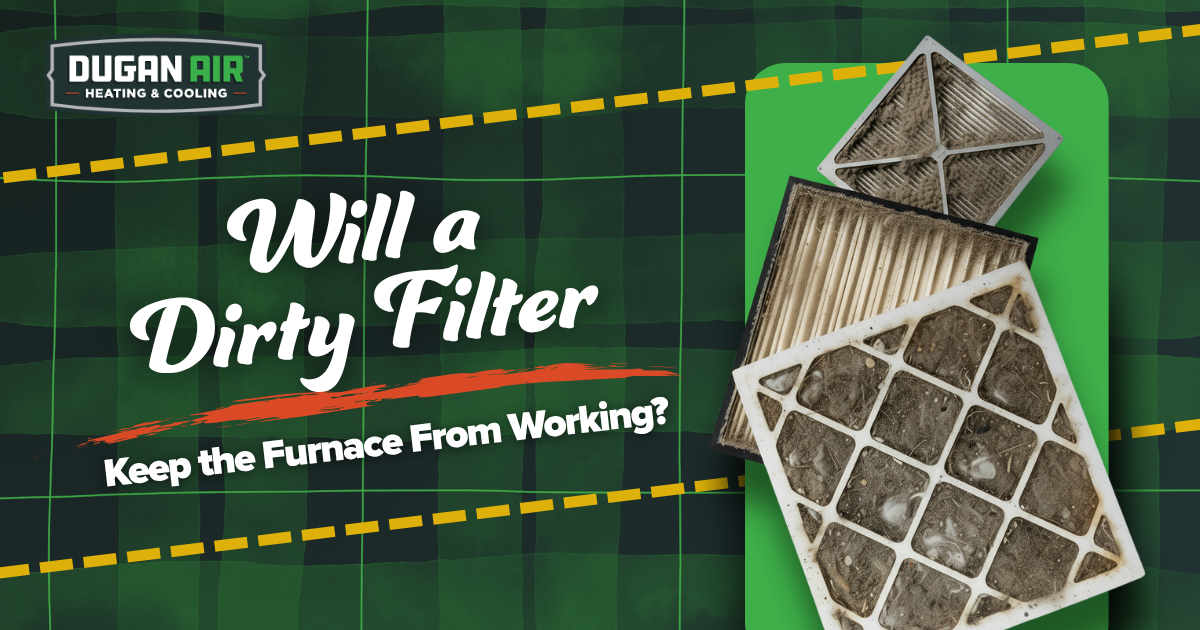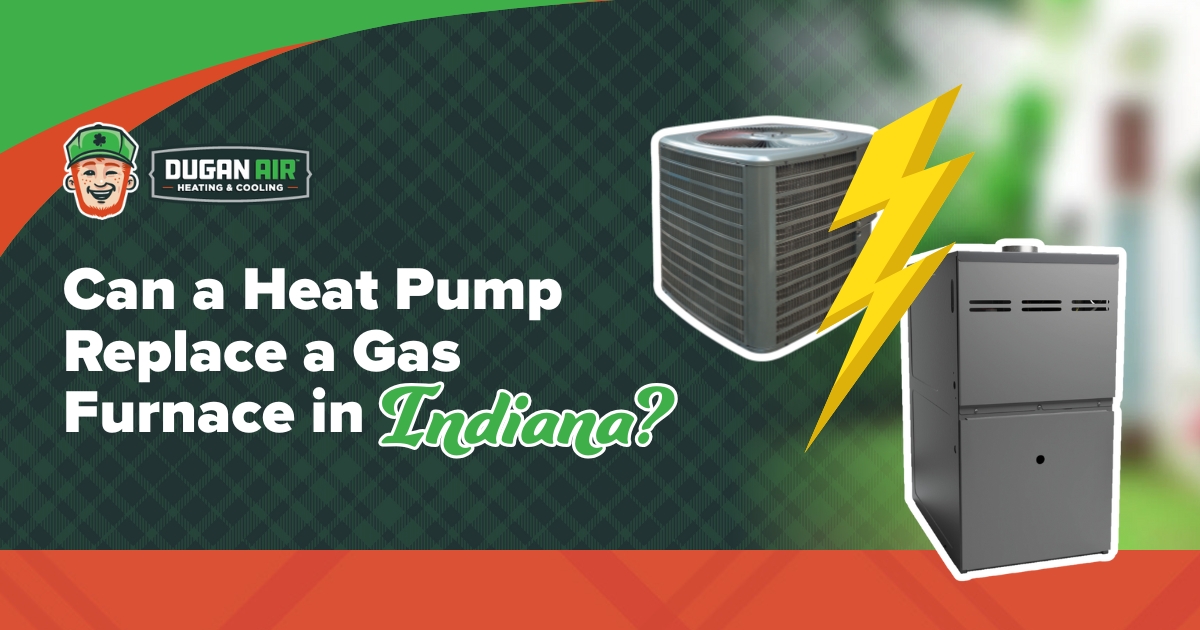Top Signs Your 10+ Year Old HVAC System Needs To Be Replaced
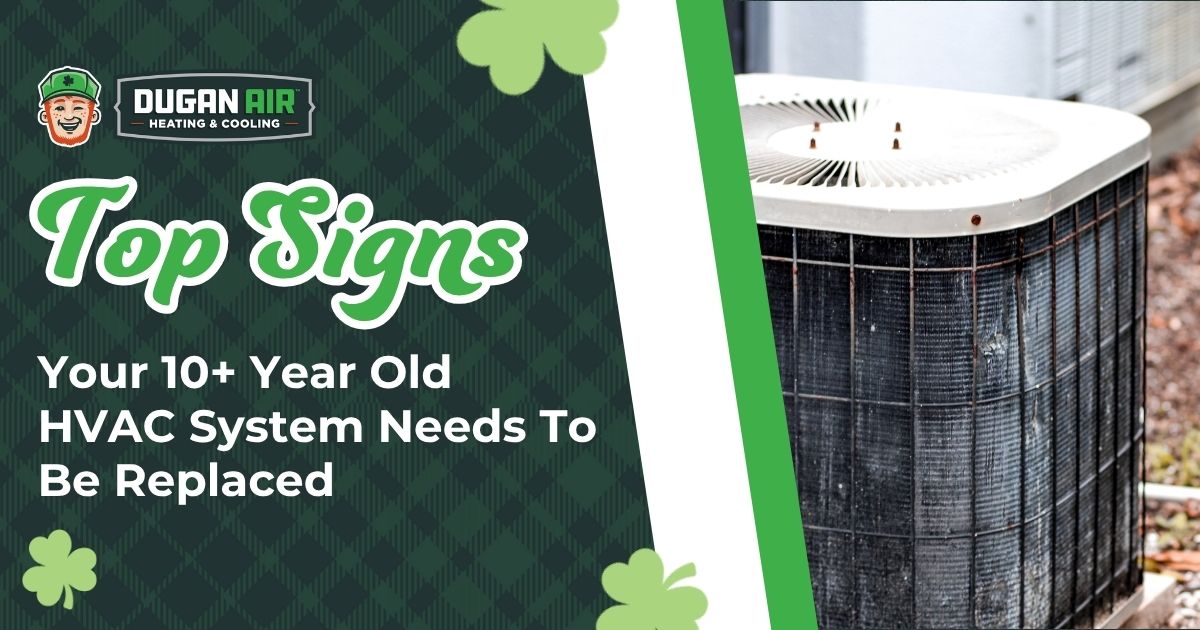
Your HVAC system works tirelessly to keep your home comfortable, battling the extremes of summer heat and winter cold. However, like any mechanical system, it has a limited service life. If you purchased your old HVAC system more than a decade ago, it may be approaching the end of its useful life and showing signs that it’s time for an upgrade. Recognizing the red flags early can save you money, improve indoor air quality, and help avoid unexpected breakdowns during peak seasons.
Explore how long HVAC systems typically last, the top signs that your older unit is due for replacement, and the benefits of upgrading to a newer, more energy-efficient system.
How Long Does an HVAC System Last?
On average, HVAC systems last between 10 and 15 years, depending on the model, usage, and the level of maintenance. Furnaces can sometimes stretch up to 20 years, while air conditioners and heat pumps typically fall on the shorter end of the spectrum.
If your system is over 10 years old and has required frequent service, it’s probably nearing the end of its life. Even with regular maintenance, age eventually takes its toll on the compressor, blower motor, and heat exchanger.
However, if a system is well-maintained, used in a mild climate, and made with high-quality components, it might last up to or beyond 20 years. That said, even if it’s still running, an older system will likely operate less efficiently and cost more in energy and repairs compared to a modern unit. While a 20-year HVAC unit lifespan is possible, performance and efficiency often decline significantly in the final years.
Top Warning Signs Your 10+ Year Old HVAC System Needs Replacing
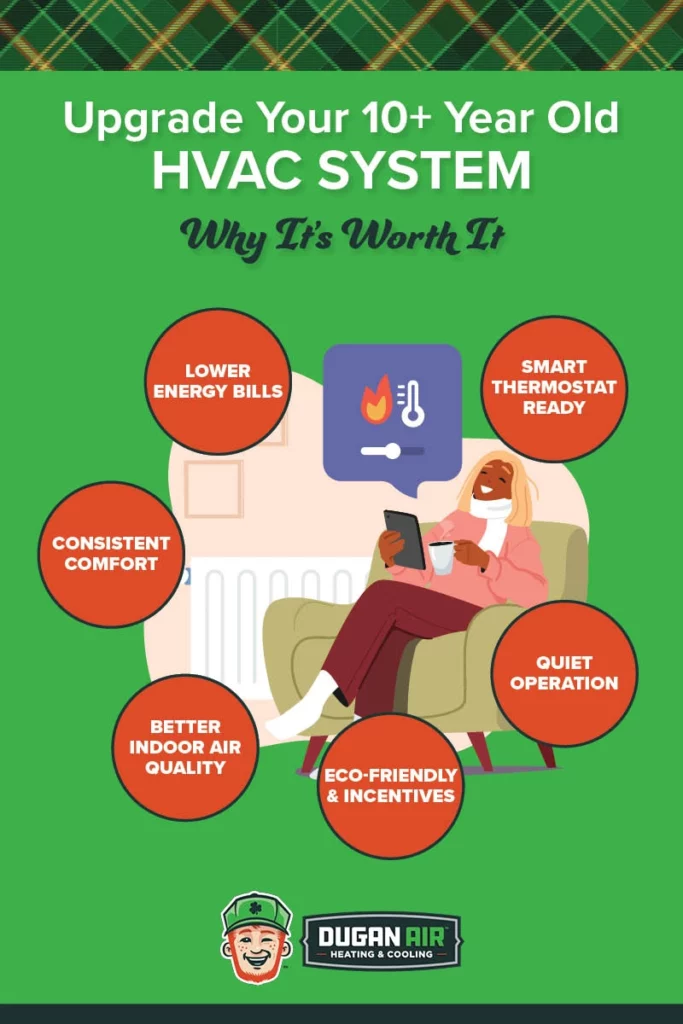
Here are the most common indicators that it’s time to say goodbye to your aging HVAC system:
- Rising energy bills: A significant and unexplained increase in your energy bill is a red flag. Older HVAC systems lose efficiency over time, even if they’re technically still running.
- Frequent repairs: If you’re calling the HVAC technician every season — or more often — you’re probably spending more on repairs than the system is worth. Frequent breakdowns are a sure sign your system is on its last legs.
- Inconsistent temperatures: Uneven temperatures from room to room can indicate that your HVAC system is no longer distributing air efficiently, often due to aging ductwork, blower issues, or a failing thermostat.
- Strange noises or odors: Rattling, grinding, or humming sounds can point to worn-out parts or loose components. Foul or musty odors might mean mold buildup, burnt wires, or a failing motor.
- Poor indoor air quality: Older systems often struggle to filter out dust, allergens, and humidity effectively. If you’re noticing more dust buildup, worsening allergies, or increased humidity levels, your HVAC system may be the culprit.
- Short cycling: Short cycling occurs when your HVAC system turns on and off frequently. This puts additional wear on your unit and is often a sign of aging components or an overworked compressor.
- Outdated technology: Modern HVAC systems come with smart thermostats, zoning capabilities, and energy-efficient ratings. If your older system lacks these features, you’re missing out on comfort, convenience, and savings.
When To Replace Your HVAC System vs. Repairing It
It’s not always easy to know when to replace your HVAC system or repair it. Here’s a simple guideline:
- If the repair cost exceeds 50% of the cost of a new system, replacement is often the best choice financially.
- If your system is 10 to 15 years old and has required multiple repairs, it’s likely nearing the end of its usable life.
- If your unit still uses R-22 refrigerant, which is now banned in the U.S., replacement is essential. Repairs involving outdated refrigerants can be costly and unsustainable.
Also, consider your comfort. If your system isn’t keeping up with your needs, a new one could be a worthwhile investment even if the old one technically still functions.
Benefits of Upgrading Your 10+ Year Old HVAC System
While the upfront cost of a new system can be substantial, the long-term benefits of improved efficiency, reduced repair costs, and enhanced comfort can make it a smart investment. Improvements include:
- Lower energy bills: New systems are dramatically more energy-efficient, especially ones with a high SEER number. Upgrading can reduce your utility costs by 20% to 40%, depending on the condition and efficiency of your old unit.
- Improved indoor air quality: Newer HVAC models feature advanced filtration systems that remove more dust, pollen, and other contaminants from the air, enhancing respiratory health and overall comfort.
- More consistent temperatures: Modern systems are more effective at maintaining steady temperatures, even during extreme weather conditions. You’ll notice fewer hot or cold spots and better airflow throughout your home.
- Quiet operation: New HVAC units are designed for quiet performance, thanks to better insulation and improved fan and compressor technology.
- Smart thermostat compatibility: Upgrading allows you to integrate your system with a smart thermostat, providing remote control, scheduling features, and performance monitoring — all of which help you save energy.
- Eco-friendly options: New HVAC systems use environmentally friendly refrigerants and meet stricter energy-efficiency standards. This not only benefits the planet but can also qualify you for rebates and tax incentives.
Contact Dugan for HVAC Upgrades and Services
If your HVAC system is more than 10 years old, it’s worth evaluating whether it’s still up to the task. Rising energy bills, uneven temperatures, frequent breakdowns, and poor air quality are all signs that replacement may be the best path forward.
Don’t wait for your old HVAC unit to fail during the hottest or coldest day of the year — schedule a professional evaluation today and experience the Dugan Difference!
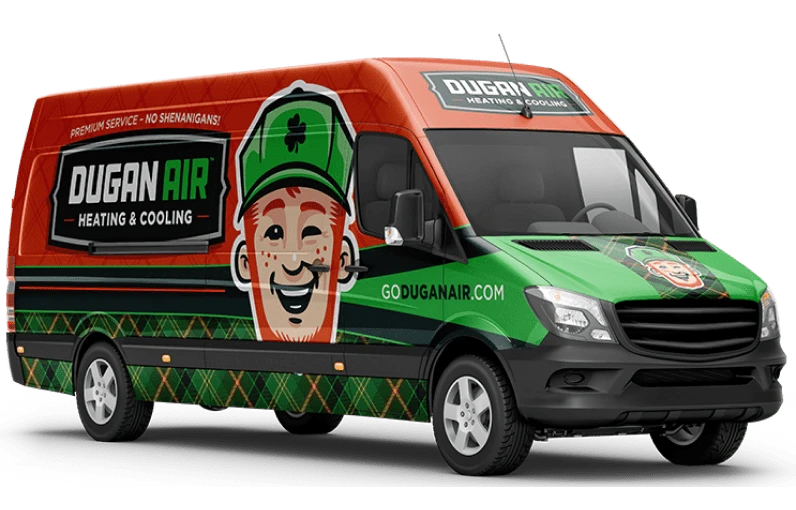
HOW CAN WE HELP?
Request Service second home page
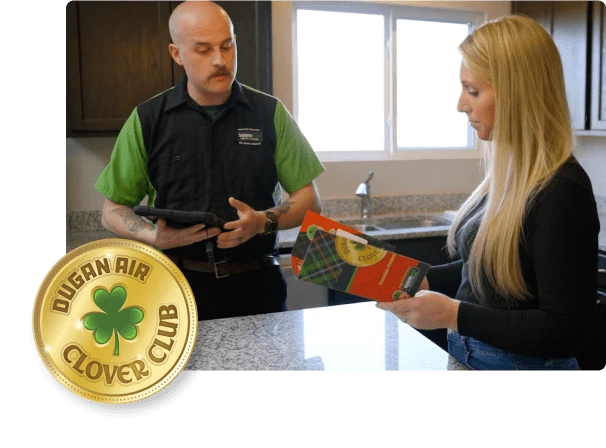
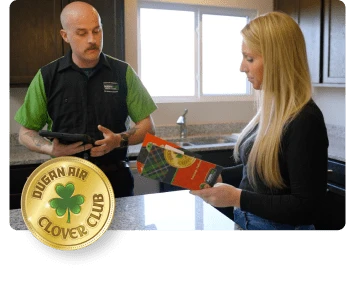
Join Our Premium Clover Club
Take Advantage of Our HVAC Maintenance Plan
Have you ever wondered if a service plan is really the pot of gold it’s rumored to be? Trust us — ours is! Signing up for a Premium Clover Club membership includes the following perks:
- Annual heating and cooling checks
- Discounts on repairs and parts
- Waived service call and overtime fees
- Priority scheduling
- Peace of mind
 Upgrade Today: $2,009 Buy-Back Credit for Your Old AC & Furnace! Financing Available!
Upgrade Today: $2,009 Buy-Back Credit for Your Old AC & Furnace! Financing Available!


